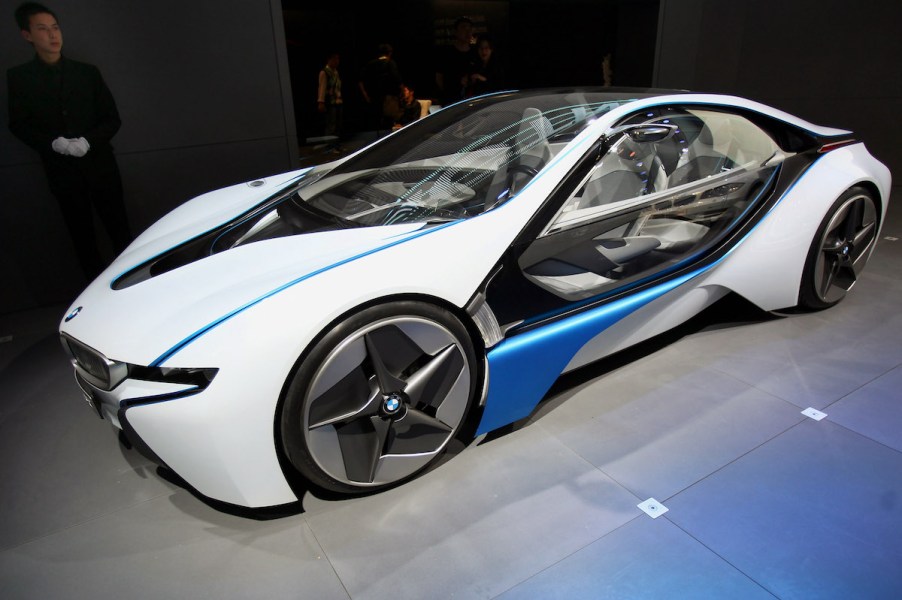
Why Automakers Spend Millions on Concept Cars They Will Never Make
Ever heard of the Spyker D12 or Mazda Furai? How about the Sony Vision-S, the so-called PlayStation car? They’re all concept cars that, despite their hype, will never see the production line. And they aren’t just sketches on a drawing board. Automakers have spent millions on research, development, and prototyping, not to mention expenses related to displaying these cars at auto shows. And sometimes, auto manufacturers spend this money without any intention of bringing these models to market, which, on the surface, makes little sense.
What is a concept car?

To understand why automakers seemingly waste millions on concept cars, it’s important to understand what they are first.
A concept car is a model specifically manufactured to showcase a new design feature, styling, and/or technology. Automakers display concept cars at auto shows to determine consumer reaction to these new features. And based on that consumer reaction, an automaker might or might not incorporate those features into a new edition of an existing model.
Concept cars have been around for decades, and despite their long history, most never go to market. In a few cases, some have seen limited production runs. But generally, the new feature showcased in a prototype is adopted into another one of the carmaker’s brands.
After a carmaker manufactures and showcases these cars, it often destroys them. However, some are placed in storage, while others make it into an automotive museum. And some are sold to wealthy private collectors. Most of these cars are not legally operable, so collectors keep them only for display purposes.
Why automakers build concept cars they will never sell
Concept cars allow automotive designers to avoid the risk of bringing a new design feature to market prematurely. For example, suppose an automotive designer has an idea for a new engine design and incorporates it into the brand’s next-gen offering. In that case, consumer demand might not generate the increased sales necessary to offset R&D and production costs. They might spend a lot of time and money adopting the new design to existing safety regulations, only to lose money because consumers aren’t interested.
On the other hand, when designers display a concept car at an auto trade show, they can assess consumer reaction to determine whether the new feature is worth adopting. Automotive and mainstream business publication reporters might write about exciting concept cars, providing automakers with inexpensive and effective marketing for their unique characteristics. Automakers can also gauge whether consumers would be willing to pay a premium for the new features or if the buzz might yield enough sales to offset increased production and regulatory-related costs.
Given that concept cars can offset financial risk and generate buzz, it makes sense that many automakers are willing to expend millions on them each year. After all, if spending six or seven figures on a concept car saves or nets a company millions, the benefits are apparent.
A few of the most famous cars that never made it to market
Even if you’ve never been to an auto show, chances are you’ve seen at least one concept car: the 1954 Ford Lincoln Futura. Though the Futura never saw mass production, its audience grew far beyond the auto enthusiast crowd. Twelve years after its debut, it appeared as the Batmobile in the 1966 Batman TV show, where it appeared in front of viewers for years.
Most concept cars don’t become iconic TV props. But many yield templates for some of today’s best-selling brands. For example, the Dodge Viper and Challenger, Jeep Rescue and Prowler, and Lincoln Navigator began as concept cars, Business Insider reports.
If you’re an auto enthusiast, you might be familiar with concept cars like BMW’s 2009 Vision Efficient Dynamics, whose high-performance hybrid features eventually found themselves in the BMW i8. Or you might’ve seen the Renault EZ-GO, providing a possible blueprint for driverless vehicles. And though fully autonomous cars aren’t on the road yet, multiple manufacturers are working on them.
Today’s concept cars will doubtlessly pave the way for tomorrow’s vehicles. So it’s no wonder automakers are sticking with this tried and true marketing approach.


